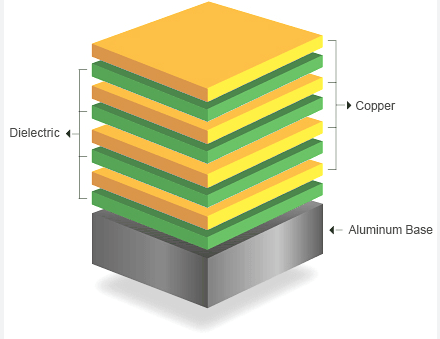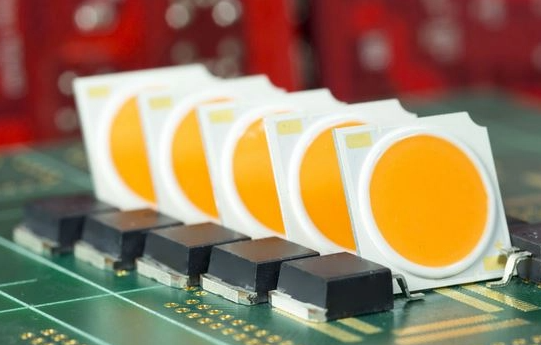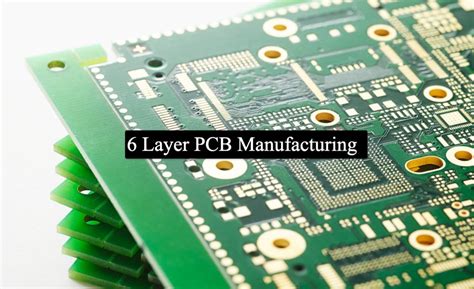Streamlining Success: Altium Multi Board Assembly Explained
Key Takeaways
In the realm of electronics design, harnessing the capabilities of Altium’s multi board assembly can significantly enhance productivity and project outcomes. By integrating multiple printed circuit boards (PCBs) into a single assembly process, designers can simplify workflows, reduce assembly time, and minimize potential errors associated with traditional single-board approaches. Notably, employing advanced techniques like concurrent design and modular assembly helps in improving both the quality and consistency of PCB assembly. Furthermore, leveraging tools within Altium’s environment allows for enhanced visualization and planning, ensuring that each component aligns perfectly across the boards. As a result, practitioners can expect not only time savings but also cost efficiencies throughout the production cycle. Ultimately, implementing multi board assembly strategies fosters a more streamlined production environment where both design flexibility and production efficiency are maximally optimized, leading to superior outcomes in PCBA projects.
Introduction to Altium Multi Board Assembly
In today’s fast-paced world of electronics, effective design and production processes are crucial for achieving success. Altium has emerged as a key player in this domain with its multi board assembly solutions that facilitate streamlined workflows for Printed Circuit Board (PCB) assembly or PCBA. This innovative approach enables designers and engineers to tackle the complexities associated with multiple boards, enhancing overall efficiency.
With the integration of Altium’s robust software tools, users can easily manage PCB design across various boards, ensuring consistency and accuracy in the production process. Not only does this minimize potential errors during the assembly phase, but it also reduces lead times, assisting teams in meeting tight deadlines.
For example, by employing layer stack management, which allows users to view the entire project holistically, teams can effectively track components across different assemblies. This level of oversight is vital for ensuring that every part is accurately accounted for—leading to optimized workflows in PCBA projects.
Additionally, collaboration features included in Altium make it easier for different stakeholders to contribute to multi board designs seamlessly. This combined effort fosters a more coherent production strategy and encourages innovative problem-solving—all while keeping costs within budget.
“The key to successful multi board assembly lies in leveraging integrated tools that enhance communication and efficiencies within teams.”
By embracing these advantages through Altium’s multi board assembly, electronics projects can significantly improve their delivery rates as well as product quality. Ultimately, understanding these processes will empower designers to push the boundaries of what is achievable in modern electronic systems.
Benefits of Using Altium for Multi Board Projects
Utilizing Altium for multi board projects offers numerous advantages that can significantly enhance both the design and production processes. One of the primary benefits is the seamless integration of different PCB assemblies into a unified workspace. This integration allows designers to visualize how various PCBA components interact, enabling more effective troubleshooting and modifications before production begins. Additionally, Altium provides advanced simulation tools that help in predicting the behavior of multi board assemblies, which can lead to improved reliability and performance in the final product.
Another important aspect is the reduction in time-to-market that Altium’s powerful design tools facilitate. By streamlining workflows and automating repetitive tasks, engineers can focus their efforts on more complex problem-solving elements of their projects. The cohesive environment fosters collaboration among team members, enhancing communication and reducing errors that often arise from miscommunication or misinterpretation of designs. Not only does this improve efficiency, but it also helps in maintaining high-quality standards throughout the design and pcb assembly process.
Integrating a robust system like Altium into your workflow not only improves efficiency but also provides flexibility to adapt designs quickly when project requirements change. As technology evolves, being able to iterate rapidly on design while maintaining control over quality ensures that project objectives are met without compromising on excellence. Thus, leveraging these benefits positions teams advantageously within competitive markets where timely innovation is key to success.
Key Techniques for Streamlining the Assembly Process
In the realm of pcb assembly, adopting strategic techniques can significantly enhance the efficiency of your multi board projects. One of the most effective methods is modular design, which allows for the interconnectedness of various boards, reducing complexity while fostering ease of integration. By implementing shared components and standardized interfaces, teams can streamline the assembly process, minimizing potential errors during production. Moreover, employing simulation tools in Altium enables designers to predict and resolve issues before they arise on the production floor. This proactive approach not only accelerates project timelines but also enhances overall quality. Another key technique involves utilizing automated testing processes throughout assembly stages, thereby ensuring that every aspect meets required specifications and reduces the need for manual inspections. This not only improves consistency but also optimally allocates resources, making the entire pcba process more lean and efficient. By embracing these techniques, design and production teams can achieve a smoother workflow that translates into successful outcomes in their electronic projects.
Best Practices for Designing Multi Board Assemblies
Designing multi board assemblies effectively requires careful planning and a set of best practices to ensure that the final product is both functional and efficient. One fundamental practice is to maintain clear communication between the design and production teams. This helps to identify potential issues early in the design process, mitigating costly changes later. Utilizing Altium provides advanced features for PCB assembly that facilitate cooperation among team members by offering collaborative tools that help streamline development.
Additionally, it is vital to standardize the design elements across different PCBA components. By employing common footprints, symbols, and design rules, teams can reduce errors significantly while improving assembly speed. Leveraging Altium‘s predefined libraries can enhance this process, as they contain verified designs that adhere to industry standards.
Moreover, considering thermal management and power distribution during the initial design phase aids in avoiding overheating issues and ensures optimal performance of each board. Separating critical components onto different boards while also designing for modularity are other strategies that promote efficiency in assembly and testing. Lastly, always include a robust set of documentation; it serves as a valuable resource for any future revisions or troubleshooting necessary during the pcb assembly process. By embracing these practices, designers can pave the way for smoother transitions from concept to production in their multi board projects.
Optimizing Production Efficiency with Altium
When it comes to enhancing production efficiency in electronic projects, utilizing Altium’s multi board assembly capabilities proves to be a game-changer. This approach integrates multiple PCB assembly processes into a cohesive workflow, significantly reducing lead times and improving resource allocation. By employing advanced techniques such as simultaneous design validation, users can identify potential issues early in the design phase. This not only minimizes costly errors but also streamlines the production line for PCBA processes. Moreover, Altium’s intuitive design interface allows engineers to visualize and manage various board layouts concurrently, facilitating easier transitions between different assembly stages. As a result, organizations can achieve higher throughput while maintaining quality standards. Additionally, leveraging automated tools within Altium aids in optimizing parts tracking and reduces manual intervention, which further enhances overall efficiency. By focusing on these aspects, teams can better align their development cycles with market demands, ensuring timely product releases while conserving resources.
Case Studies: Successful Multi Board Assembly Implementations
Exploring real-world applications of Altium’s multi board assembly capabilities sheds light on its transformative impact across various industries. For instance, a prominent consumer electronics company leveraged pcb assembly techniques to simplify a complex device featuring several interconnected boards. By employing Altium’s advanced design tools, the team was able to enhance communication between the boards, significantly reducing the time needed for prototyping and testing. This not only expedited their time-to-market but also minimized production errors during the pcba process, leading to higher overall quality and customer satisfaction.
Another case involves an automotive manufacturer that integrated multi board assemblies into their electronic control units (ECUs). This application required robust designs with intricate layouts; however, with Altium, engineers swiftly managed design revisions and modifications throughout the project lifecycle. The automation features within the software allowed for streamlined data flow and easier collaboration among team members, facilitating a more efficient workflow. As a result, their production efficiency increased markedly, enabling them to stay competitive in an industry where innovation and responsiveness are crucial.
These examples reflect how implementing Altium’s multi board assembly solutions not only resolves technical challenges but also drives substantial benefits in terms of efficiency and quality assurance. The positive outcomes experienced by these organizations highlight the value of adopting best practices in electronic design, making a strong case for using pcb assembly methodologies tailored for complex projects.
Troubleshooting Common Challenges in Multi Board Assembly
In the realm of pcb assembly, the transition from design to production often presents various challenges, particularly when dealing with multi board assemblies. One prominent issue arises from the complexity of interconnections required between multiple pcba units. These interconnections demand meticulous attention to ensure signal integrity and functionality. To mitigate potential problems, engineers can employ simulation tools during the design phase, which provide a virtual representation of the interactions among boards. Furthermore, misalignments during assembly can lead to operational failures; thus, maintaining precise alignment aids in enhancing the overall quality of the pcb assembly process. Another common challenge involves managing component placement on each board. The use of automated assembly techniques can significantly enhance placement accuracy while reducing assembly times. Additionally, ensuring that all components are accurately specified and adequately sourced is critical. Engineers should adopt a proactive approach in sourcing quality components to minimize defects that might arise during production. By addressing these challenges through thoughtful planning and execution, teams can better harness the benefits of multi board assemblies, ultimately driving efficiency and technical success in their electronic projects.
Future Trends in Electronic Design and Multi Board Technologies
As the demand for more complex electronic systems increases, the future of electronic design, particularly in multi board assembly, seems promising. One notable trend is the integration of advanced automation technologies into the pcb assembly process. This shift not only accelerates production times but also enhances precision and reduces human error, leading to superior quality in assembled products. Furthermore, innovative techniques such as modular design are becoming more prevalent, allowing engineers to create adaptable systems that can be easily modified or updated without a complete redesign. This modularity significantly contributes to efficiency during both design and production phases of pcba. Another key trend is the rise of sustainability in electronic manufacturing, where companies are focusing on eco-friendly materials and processes that minimize waste and energy consumption during multi board assembly. Additionally, advancements in simulation software are enabling designers to visualize and test their assemblies virtually before physical production commences. This not only optimizes performance but also ensures that issues can be identified early in the development cycle. As these trends continue to evolve, they hold the potential to revolutionize how engineers approach electronic design, making it increasingly streamlined and efficient for future applications.
Conclusion
In summary, the use of Altium for pcb assembly significantly enhances both design and production processes, especially in multi board projects. By employing various strategies and best practices outlined throughout the article, engineers can achieve remarkable efficiencies when managing complexities inherent in pcba. The integration of advanced Altium tools not only streamlines workflow but also facilitates better collaboration among teams involved in multi board assembly. Adopting a systematic approach to pcb assembly mitigates common challenges and prepares organizations to embrace future trends in electronic design. As the demand for sophisticated electronic solutions continues to grow, leveraging the power of Altium will be pivotal for those looking to optimize their operations and elevate their project outcomes. Ultimately, effective use of these techniques will lead to a new standard in design efficiency, positioning companies to thrive in an increasingly competitive landscape.
FAQs
What is Altium Multi Board Assembly?
Altium Multi Board Assembly refers to the process of designing and manufacturing multiple interconnected printed circuit boards (PCBs) within a single project using Altium software. This approach enhances the efficiency of pcb assembly by allowing for simultaneous design, streamlining coordination, and optimizing production processes.
Why should I consider using Altium for my multi board projects?
Using Altium for multi board projects provides several advantages, including improved collaboration among teams, reduced design cycle times, and increased flexibility in managing complex assemblies. Additionally, it eliminates potential errors by integrating changes across all boards seamlessly.
How does multi board assembly impact production efficiency?
Multi board assembly significantly impacts production efficiency by minimizing setup times and allowing for parallel processing of the PCBs. This close integration helps to optimize workflow, thereby accelerating the overall timeline from design to final production in your pcba projects.
What techniques can I use to streamline the assembly process?
To streamline the assembly process, implement techniques such as utilizing shared libraries for components across multiple boards, employing effective layout strategies that facilitate easy interconnections, and leveraging automation tools available within Altium for faster adjustments.
Explore More About PCB Assembly
To learn more about optimizing your pcb assembly projects with best practices and innovative techniques, please click here.







